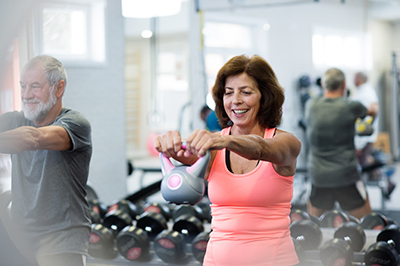Walking will help you live a longer life, says TV’s Dr Rangan Chatterjee

Physical inactivity, especially sitting for long periods, is a greater health risk than being overweight or obese. Studies suggest it can be as bad for you as smoking. And you can’t simply undo the damage that prolonged sitting does with a 45-minute gym class.
Benefits of walking for diabetes
However, there’s good news. A 2017 study by researchers in the Netherlands found that breaking up sitting with light activities brought about significant improvements over and beyond gym workouts. According to the study, light-intensity walking to break up periods of sitting improved glucose levels and insulin sensitivity in people with type 2 diabetes more than structured exercise.
Walking helps your immune system
Movement and exercise improve your immune system function by increasing the activity of immune cells that fight infection. Movement also enhances the ability of your body to produce energy, improves your gut microbiota, and reduces inflammation and oxidative stress, while helping blood pressure as well as circulatory and lymphatic flow – the benefits are endless.
My suggestions here will all improve your health but if I had to prioritise just one, it would be the first…
Walk 10,000 steps a day
This can help you reduce your risk of Alzheimer’s, cancer, heart attacks, strokes and type 2 diabetes, as well as improve your mental wellbeing. Look for as many ways as possible to incorporate walking Into your life: take the stairs instead of the lift; walk into town; park at the edge of the supermarket car park; get off the bus early.
Also, try never to sit down for more than an hour at a time. Put a reminder on your phone to get up and move around every 60 minutes.
Do as much of your walking as possible in the morning. A recent study found that exposure to bright morning light correlates with lower body weight. This makes sense as it fits with what we know about the body’s natural circadian rhythms.
Boost Muscle to live longer
Above the age of 30, if you’re physically inactive you lose 3-5 per cent of your muscle mass every decade. Muscle loss is a strong predictor of late-life mortality. When it becomes problematic we call it ‘sarcopenia’, and rates of this disorder increase with age.
A huge benefit of maintaining muscle is to regulate insulin. The more muscle you have, the more space your insulin has to put all the food you’re taking in. Think of it as like having bigger cupboards: more room in there means you can get away with eating more, and you’re less likely to develop type 2 diabetes.
Exercise in short bursts with HIIT
High-intensity interval training (HIIT) has been shown to have fantastic health benefits. One recent study found that an 11-minute HIIT workout gives as much of
a gain as an hour of continuous activity. Another showed that one minute of intense working out – pushing yourself as hard as you possibly can in three 20-second bursts of intense cycling, spread out over 10 minutes – showed equivalent improvements to health as 45 minutes of moderate-intensity cycling.
Doctor in the House walking workout
One of my most popular workouts (featured in the first series of Doctor in the House) is one of the simplest: walk down your road as fast as you can for a minute. When that minute’s over, look to see which house number you’ve arrived at, then walk at a normal pace back to the start. Repeat, but this time see whether you can get to a house further down the road. This may sound easy but by the time you have done it three times, you will be really feeling it. Try and do it five times.
Dr Chatterjee’s indoor workout
Don’t want to go outside on a rainy day? Do 10 burpees, 10 star jumps and 10 side lunges in your living room for 40 seconds. Spend the next 80 seconds walking around slowly. Repeat five times. Alternatively, try a combination of fast alternating leg lunges, press-ups and kettlebell swings. If none of these appeal, make up your own. There are infinite possibilities!
- Everything you need to know about Dr Chatterjee
- Dr Chatterjee’s tops for boosting energy levels










